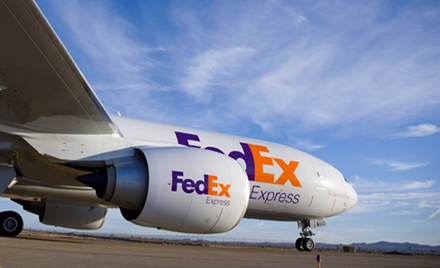
FedEx delivers on modern workplace vision with cloud computing
Today’s post was written by Robert Carter, CIO and executive vice president of information services at FedEx.
 Strategic technology is part of FedEx’s heritage and key to our continued innovation in the future. In 1978, our founder and CEO Fred Smith said, “The information about the package is as important as the package itself.” This established a culture where technology functions as the central nervous system behind every single business process at the company. It’s behind every one of the 13 million shipments that we process each day. It supports our more than 400,000 team members working in 220 countries and territories as they connect 99 percent of the global GDP through our transportation, e-commerce, and business services.
Strategic technology is part of FedEx’s heritage and key to our continued innovation in the future. In 1978, our founder and CEO Fred Smith said, “The information about the package is as important as the package itself.” This established a culture where technology functions as the central nervous system behind every single business process at the company. It’s behind every one of the 13 million shipments that we process each day. It supports our more than 400,000 team members working in 220 countries and territories as they connect 99 percent of the global GDP through our transportation, e-commerce, and business services.
This heritage of custom-built, innovative, end-to-end systems of record and engagement—including our invention of modern package tracking—enabled the business to expand globally while maintaining our focus on process quality control. However, as FedEx entered the modern computing era with a wake of legacy technologies, we had to re-evaluate the strategic IT that we need to move forward in an internet-enabled world. In 2009, we began a modernization journey that we called Project Renewal. It’s our ongoing vision for cloud computing where we are standardizing on today’s internet protocols—the scalable X86 datacenter platform and the “tap-into” world of software as a service.
Whether related to the logistics business or not, there’s a massive amount of disruptive activity in today’s e-commerce world, with venture capital pouring into both first-mile and last-mile solutions. So, we need to refactor our systems to stay competitive. On the infrastructure side, we have a hybrid compute environment where we burst containerized transaction traffic between our on-premises implementations and the public cloud. With Microsoft, we found a vendor that’s compatible with our approach to multi-cloud and platform services and the protection of our data through intelligent security services. For our same-day service for retailers, we built an API-first, cloud-native application using Microsoft Azure. This competitive, last-mile solution extended our business—with fewer IT resources required.
And when we talk about our renewal journey and software, we’re moving from a legacy of deep vertical applications toward a world where we can tap into and integrate software services to meet our needs and stay connected with customers. This is the essence of “everything as a service,” which dismantles the complexity of constant upgrade cycles, versioning, and patching. Now, instead of installing software across the many thousands of places where we operate, we are taking a different approach. We chose Microsoft 365 so our more than 400,000 team members can take advantage of the cloud in ways that make us more collaborative and creative, driving a new era of innovation.
The diversity of cloud-based business solutions that we can deploy to meet our associates’ needs, no matter where they work, is a huge advantage for FedEx. Now, frontline workers such as our mechanics can take their tablets and access the engineering diagrams they need while they’re seven stories up on a scaffolding, servicing the tail engine on one of our aircraft. We see it as key to our future to provide this modern “tap-into” world, where everything is accessible and where we operate as collaborative virtual teams in highly secure digital environments.
And at FedEx, we’ve always promoted a culture of empowerment because we believe it’s the wellspring of innovation. We got where we are through our heritage of technology innovation, but we cannot afford to rest on that reputation. Since 2009, we’ve been working diligently to stay relevant, re-engineering our legacy software for the cloud so we can engage with next-generation fulfillment systems. Whether you are shipping apparel, or flowers, or car parts from the other side of the world, FedEx will continue to innovate in a cloud-based computing paradigm, so we can make good on our promise to move everything to everywhere—just as we’ve always done.
—Robert Carter

